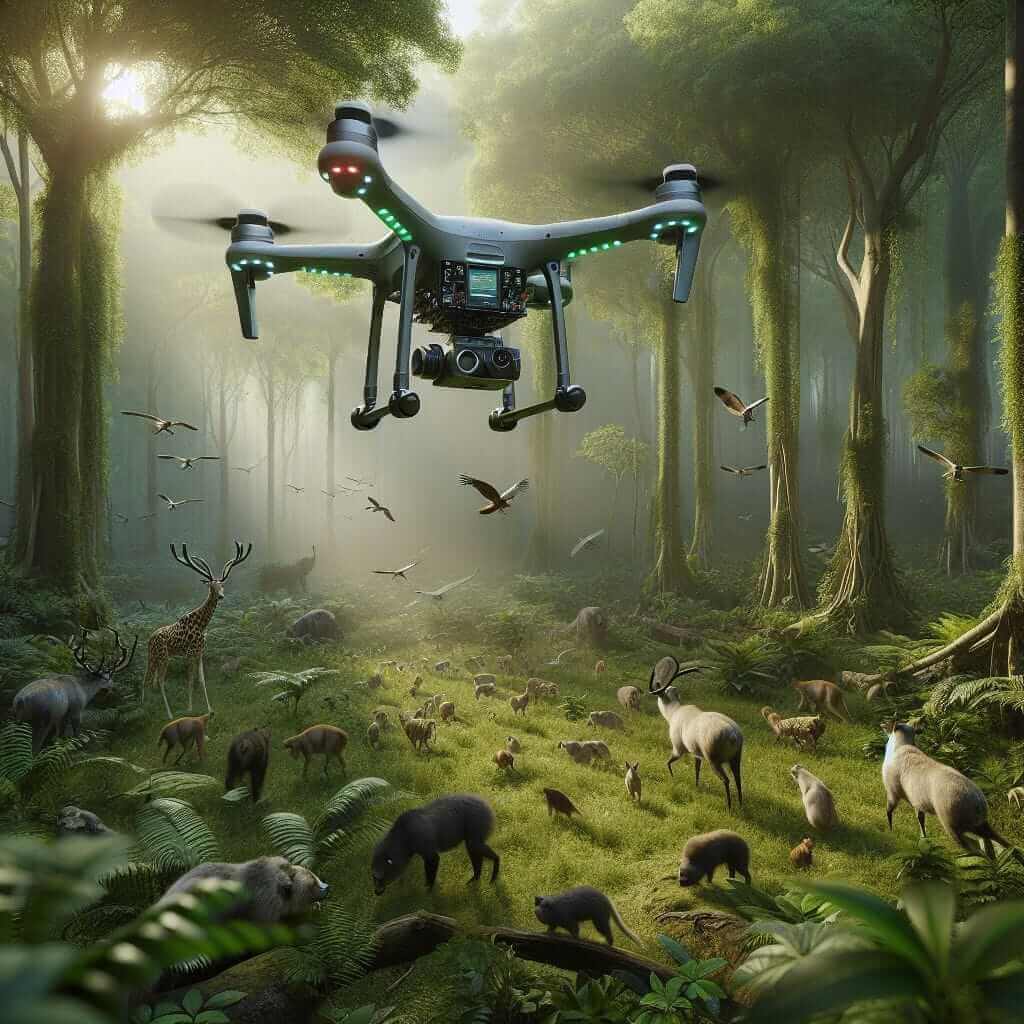The IELTS Reading section tests your ability to understand and extract information from given texts. Over the years, topics related to technology and its impact on various fields have become increasingly common. One such trending topic is “How is AI transforming wildlife conservation efforts?”. Given its growing relevance in recent years, this topic is likely to appear in future IELTS exams.
In this article, we will explore the role of AI in wildlife conservation, providing a comprehensive reading passage and related questions for practice. This will help you prepare for the IELTS Reading section effectively.
Main Content
Sample Reading Passage: Medium Text
How is AI Transforming Wildlife Conservation Efforts?
Artificial Intelligence (AI) has emerged as a powerful tool in wildlife conservation. From monitoring endangered species to predicting poaching activities, AI is revolutionizing the way we protect our planet’s biodiversity.
One of the key applications of AI in wildlife conservation is in the area of population monitoring. Traditional methods of tracking animal populations often involve labor-intensive fieldwork and manual data collection. However, AI-powered technologies such as drones equipped with cameras and sensors can now capture vast amounts of data in a fraction of the time. These devices use image recognition software to identify and count animals, providing researchers with accurate and up-to-date information on population sizes and dynamics.
Moreover, AI is instrumental in combating illegal wildlife trade. Machine learning algorithms can analyze patterns in poaching activities, helping authorities predict and prevent future incidents. For example, AI systems can process data from various sources, including cameras, social media, and satellite imagery, to identify potential poaching hotspots. This enables conservationists to take preemptive action and allocate resources more efficiently.
Additionally, AI application in habitat protection is profound. AI tools can analyze environmental data to detect changes in habitats that may threaten wildlife. For instance, AI algorithms can predict forest fires or deforestation events, enabling prompt intervention to mitigate potential damage.
Despite its potential, the integration of AI in wildlife conservation is not without challenges. The high cost of advanced AI technologies can limit their accessibility, particularly in developing countries. Furthermore, the deployment of AI systems requires technical expertise, which may not always be readily available in conservation teams.
In conclusion, AI is significantly transforming wildlife conservation efforts through enhanced population monitoring, poaching prevention, and habitat protection. While challenges remain, continued advancements and collaborative efforts can further harness AI’s potential to safeguard our planet’s biodiversity.
Practice Questions
Multiple Choice
-
What is one of the primary ways AI aids in monitoring animal populations?
- A. By reducing the need for manual data collection
- B. By increasing the number of fieldworkers
- C. By eliminating the use of drones
- D. By relying solely on social media data
-
How does AI contribute to preventing illegal wildlife trade?
- A. By creating new habitats for wildlife
- B. By analyzing patterns in poaching activities
- C. By increasing the population of endangered species
- D. By reducing the need for law enforcement
True/False/Not Given
-
AI technologies have completely replaced traditional methods of tracking animal populations. (True/False/Not Given)
-
The deployment of AI systems in wildlife conservation is often limited due to high costs. (True/False/Not Given)
Answer Key and Explanations
-
A. By reducing the need for manual data collection
- Explanation: The passage states that AI-powered technologies reduce the need for labor-intensive fieldwork by using drones and image recognition software.
-
B. By analyzing patterns in poaching activities
- Explanation: The passage explains that machine learning algorithms analyze patterns to predict poaching incidents, helping prevent illegal wildlife trade.
-
False
- Explanation: The passage indicates that AI aids in monitoring but does not say it has completely replaced traditional methods.
-
True
- Explanation: The passage notes that the high cost of AI technologies can limit their accessibility, especially in developing countries.
Common Mistakes
- Misinterpreting Data: Ensure you understand what specific data points refer to and how they are used in the context of wildlife conservation.
- Overlooking Keywords: Pay attention to words indicating the extent of change, such as “revolutionizing,” “instrumental,” or “challenging.”
Vocabulary
- Biodiversity (noun) /ˌbaɪoʊdaɪˈvɜːrsəti/: The variety of plant and animal life in a particular habitat.
- Algorithm (noun) /ˈælɡərɪðəm/: A process or set of rules to be followed in calculations or other problem-solving operations.
- Mitigate (verb) /ˈmɪtɪɡeɪt/: To make less severe or serious.
Grammar Points
- Gerunds and Infinitives: Notice the use of gerunds (e.g., “monitoring,” “tracking”) to describe ongoing actions related to conservation.
- Relative Clauses: Used to add more information (e.g., “AI-powered technologies which reduce labor-intensive fieldwork”).
Tips for High Reading Scores
- Practice Regularly: Regular practice with a variety of topics helps improve reading speed and comprehension.
- Underline Key Information: As you read, underline important information that may be relevant to answering questions.
- Review Mistakes: Understanding why a mistake was made helps avoid similar errors in the future.
 AI transforming wildlife conservation
AI transforming wildlife conservation
By following these tips and practicing with high-quality materials, you can enhance your performance in the IELTS Reading section and increase your chances of achieving a high score.


